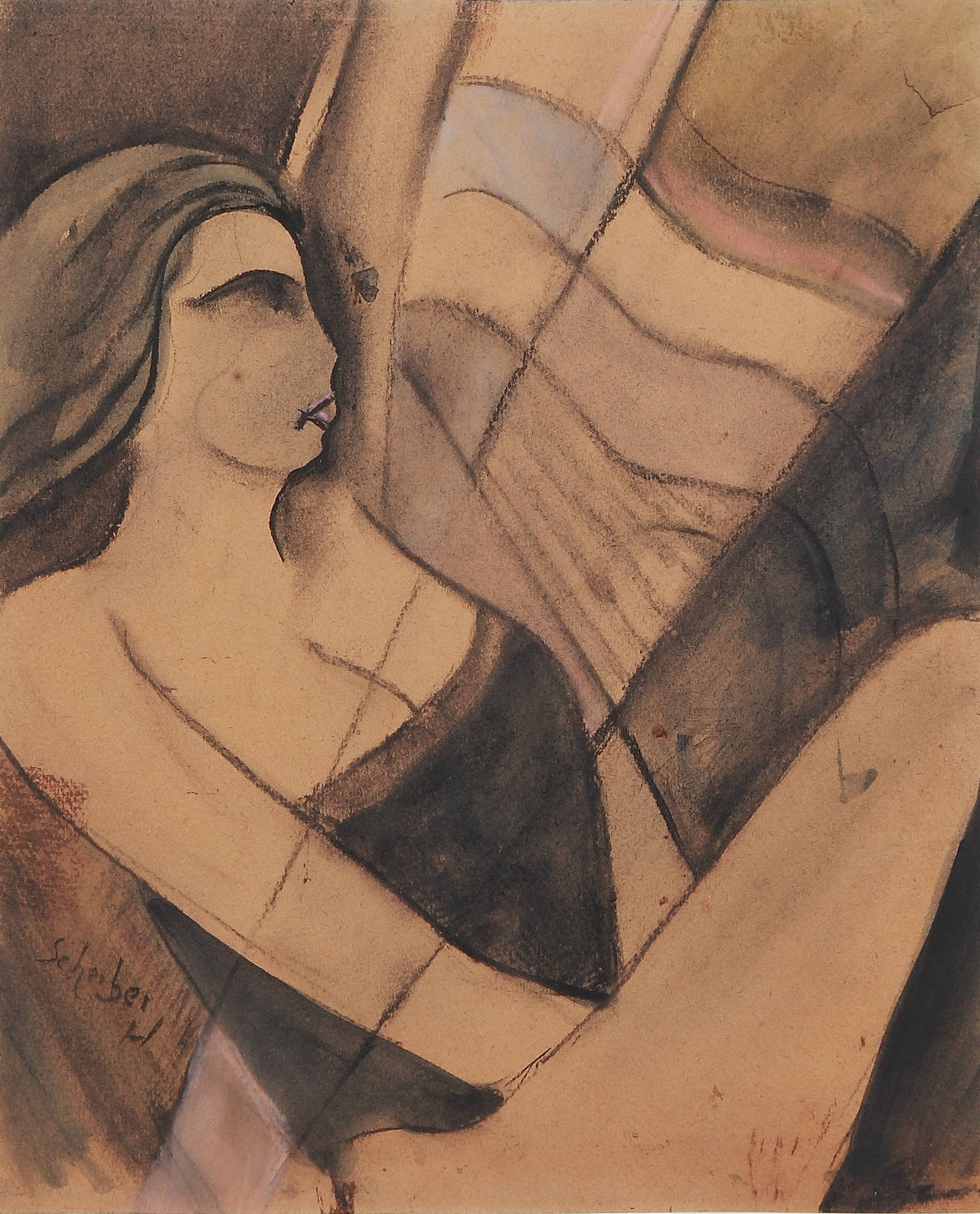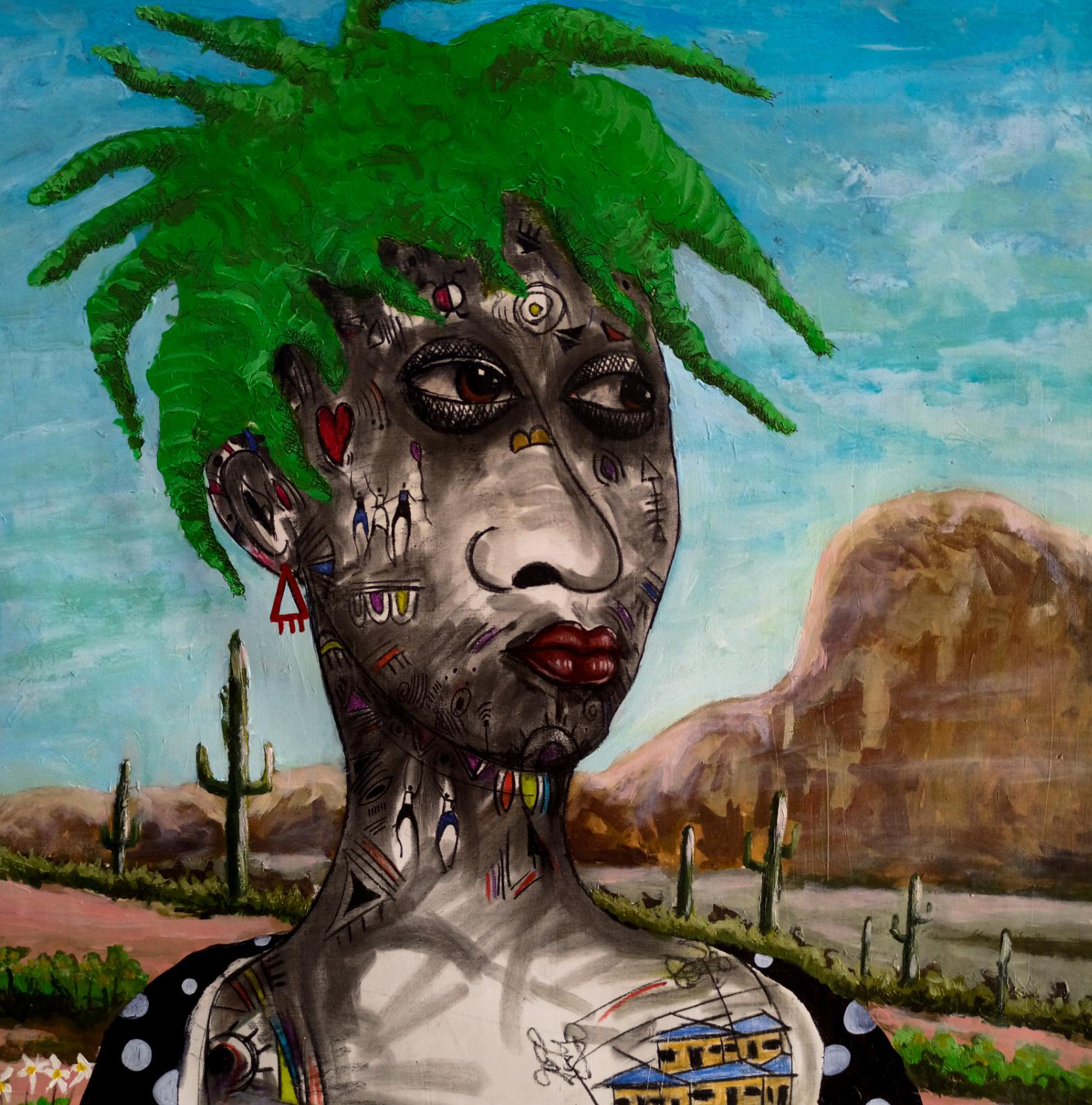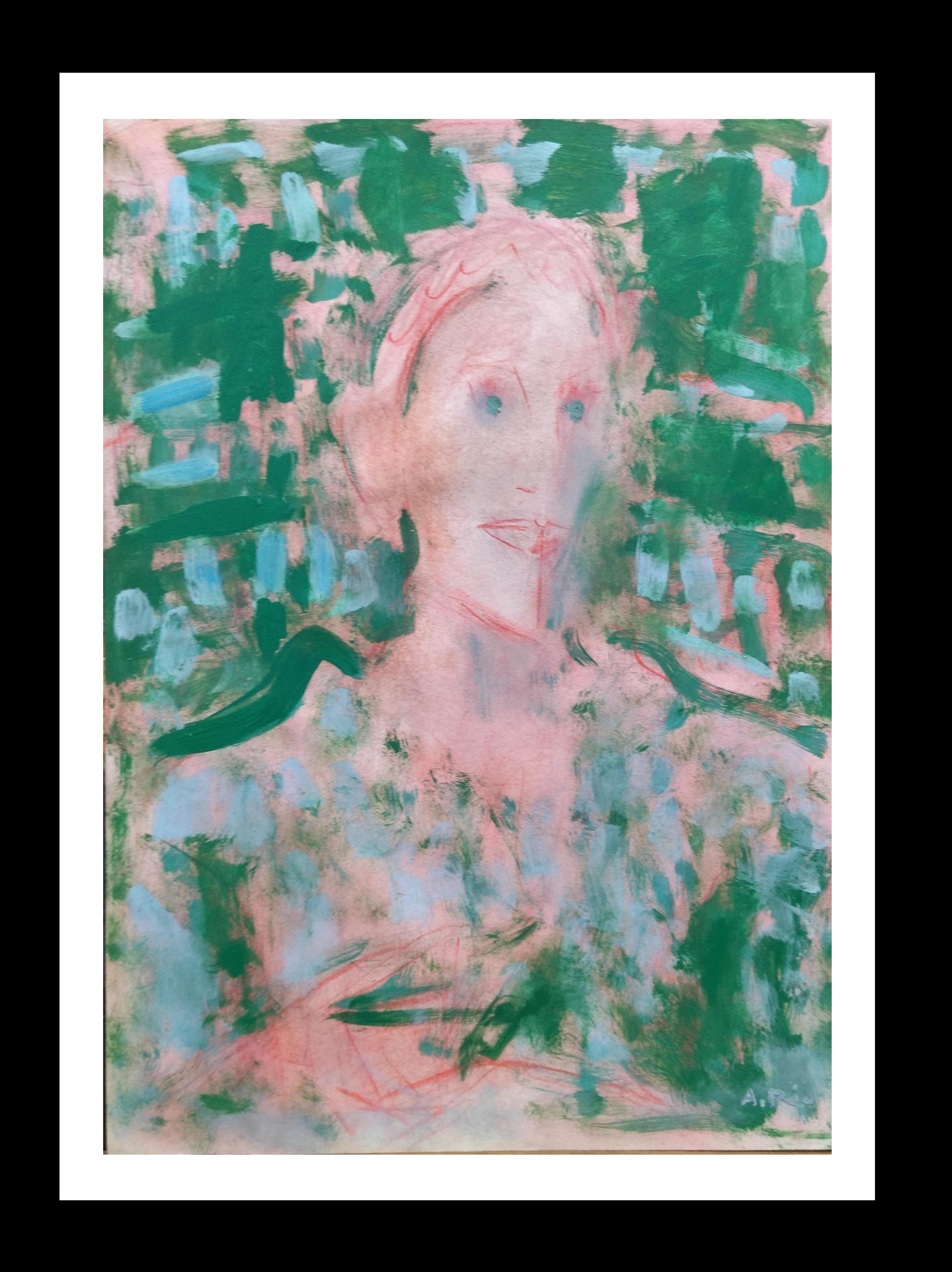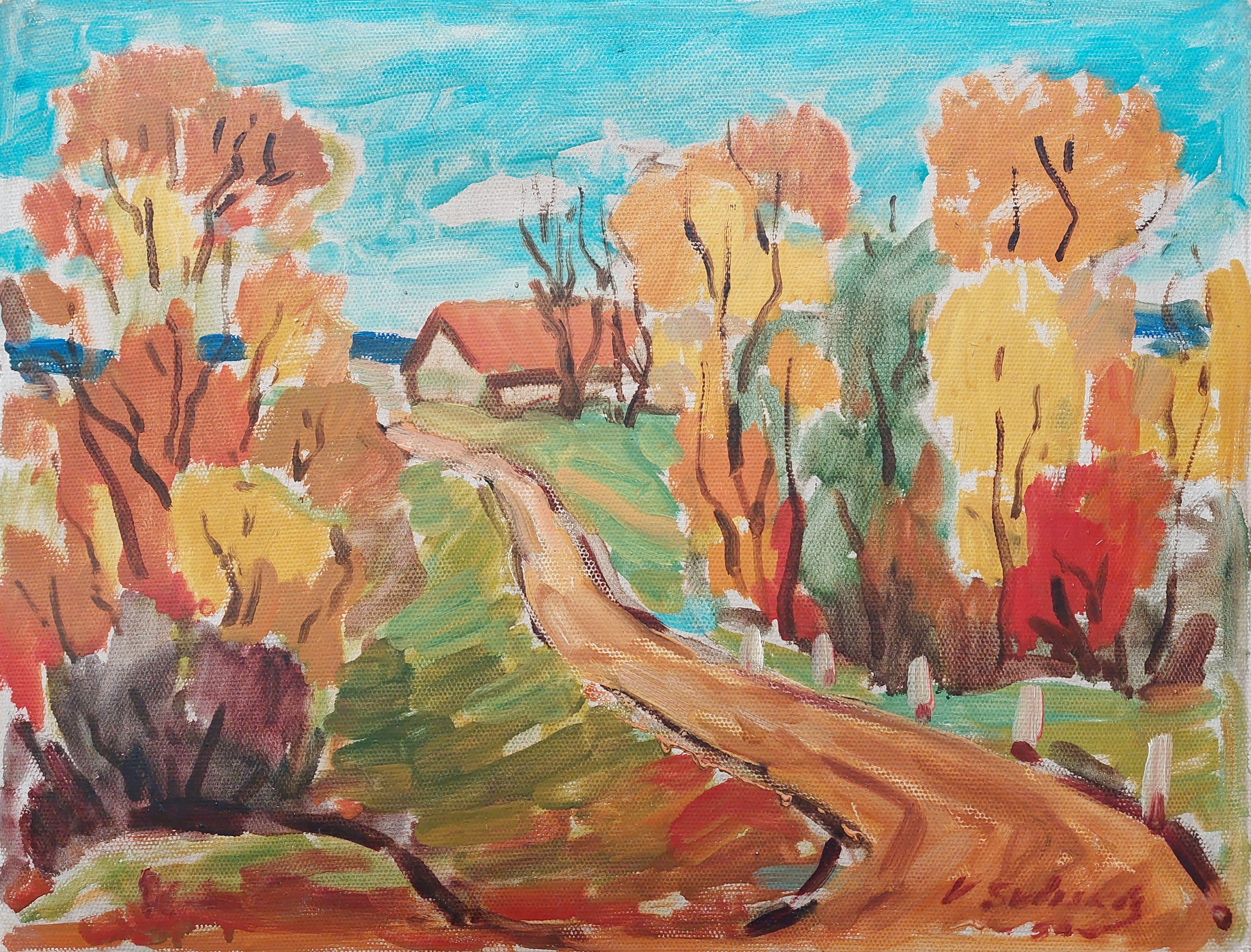Items Similar to Donas 1.Original crayons paper painting
Want more images or videos?
Request additional images or videos from the seller
1 of 12
Agustin RioDonas 1.Original crayons paper painting1980
1980
About the Item
A. Rio Barcelona .Original gouache paper painting .
AGUSTIN RIO ( Barceona 1923 – Barcelona 1997)
Formed in Llotja i al Cercle Artístic de Sant Lluc He appeared individually in 1953 in the Argos hall of Barcelona, and in 1954 he exhibited in the galleries El Jardín. He spent a season in Paris. He exhibited individually and collectively in various cities of Spain and Europe. His works are centered in urban landscapes, he preferred the popular themes, of neighborhood, painted with a naive tremendism and naturalness.
- Creator:Agustin Rio (1923 - 1997, Spanish)
- Creation Year:1980
- Dimensions:Height: 25.6 in (65 cm)Width: 18.12 in (46 cm)Depth: 0.4 in (1 cm)
- Medium:
- Movement & Style:
- Period:
- Condition:
- Gallery Location:CORAL GABLES - MIAMI, FL
- Reference Number:1stDibs: LU471313792612

About the Seller
4.7
Platinum Seller
These expertly vetted sellers are 1stDibs' most experienced sellers and are rated highest by our customers.
Established in 1980
1stDibs seller since 2016
223 sales on 1stDibs
Typical response time: <1 hour
- ShippingRetrieving quote...Ships From: CORAL GABLES - MIAMI, FL
- Return PolicyA return for this item may be initiated within 3 days of delivery.
More From This SellerView All
- Donas 2.Original crayons paper paintingBy Agustin RioLocated in CORAL GABLES - MIAMI, FLA. Rio .Original gouache paper painting . AGUSTIN RIO ( Barceona 1923 – Barcelona 1997) Formed in Llotja i al Cercle Artístic de Sant Lluc He appeared individually in 1953 in the ...Category
1980s Expressionist Figurative Paintings
MaterialsCrayon, Cardboard
- Abella gymnast Original acrylic paintingBy Juan Jose Abella RubioLocated in CORAL GABLES - MIAMI, FLAbella. Original acrylic painting Juan Jose Abella Rubio was born in Estercuel, a hamlet anchored in the Teruel mining basin in March 1944. In his painting the ocher and reddish c...Category
21st Century and Contemporary Expressionist Figurative Paintings
MaterialsAcrylic, Cardboard
- JULIEN MEUNIE. COAST. MAJORCA original watercolor paintingBy Julen MeunieLocated in CORAL GABLES - MIAMI, FLCOAST. MAJORCA original watercolor painting. Julien was born in 1948 in Vichy, France. He studied art and theater in Clermont-Ferrand at the same time as finishing his degree in Fr...Category
Late 20th Century Expressionist Landscape Paintings
MaterialsWatercolor, Cardboard
- Barcelona .Original gouache paper paintingBy Agustin RioLocated in CORAL GABLES - MIAMI, FLA. Rio Barcelona .Original gouache paper painting . AGUSTIN RIO ( Barceona 1923 – Barcelona 1997) Formed in Llotja i al Cercle Artístic de Sant Lluc He appeared individually in 195...Category
1980s Expressionist Figurative Paintings
MaterialsGouache, Cardboard
- Almazan Realistic Still Life Acrylic PaintingBy Luis Almazan MiquelLocated in CORAL GABLES - MIAMI, FLAlmazan Realistic Still Life Acrylic Painting framed MIQUEL was an artist focused on the art of realism. His structured works on his great mastery of drawing, are romantic and tran...Category
Early 2000s Expressionist Figurative Paintings
MaterialsPastel
- Caldentey Mallorca original neo figurative watercolor paper paintingBy Toni CaldenteyLocated in CORAL GABLES - MIAMI, FLoriginal neo-expressionist acrylic painting . virtual framed contemporary work by the mallorquin artist Toni CALDENTEY Painting on paper CALDENTEY, Toni - (Portocolom, Mallorca - Spa...Category
Early 2000s Neo-Expressionist Figurative Paintings
MaterialsWatercolor, Cardboard
You May Also Like
- Hugó Scheiber Pastel "Sailing", about 1930By Hugó ScheiberLocated in Berlin, DEPastel and carbon pencil on cardboard, ca. 1930 by Hugo Scheiber. Signed lower left: Scheiber H. Dimensions: 14.96 x 12.99 in ( 38 x 33 cm ), Framed: 19.69 x 15.75 in ( 50 x 40 cm ) Hugo Scheiber born 1873 Budapest - he died 1953...Category
Early 20th Century Expressionist Figurative Paintings
MaterialsCarbon Pencil, Pastel, Cardboard
- Remember MeLocated in Ibadan, Oyo"Remember Me" is a poignant piece of art that evokes a powerful sense of nostalgia and remembrance. The piece centers around the face of a character, depic...Category
21st Century and Contemporary Expressionist Figurative Paintings
MaterialsPastel, Charcoal, Acrylic, Cardboard
- Valley of No Shadows 1Located in Ibadan, OyoValley of No Shadows is an original painting by Fredrick Idele. Fredrick created Valley of No Shadows with Acrylic, Pastel, and Charcoal on a 24W by 24H inches Card. "Valley of No Shadows" is a captivating artwork that portrays a peaceful state of mind where fears and worries are conquered, and inner peace is found. The artwork features a character adorned with African symbols...Category
21st Century and Contemporary Expressionist Figurative Paintings
MaterialsPastel, Acrylic, Cardboard, Charcoal
- Nandor Vagh Weinmann, Oil on cardboard, Naked Back, 1930sLocated in Saint Amans des cots, FROil on cardboard by Nandor VAGH WEINMANN (1897-1978), France, 1930s. Naked back. With frame: 64x56 cm - 25.2x22 inches ; without frame: 46x38cm - 18.1x15 inches. 8F format. Signed "Nandor V. Weinmann" lower left. In its Montparnasse frame. Very good condition. Born October 3, 1897 in Budapest, Nándor is the older brother of Elemer and Maurice Vagh-Weinmann. He came to Paris to present his work in 1931. He died on December 12, 1978 near Montereau (Seine-et-Marne) following an automobile accident. He is the most colorful of the three “expressionist” brothers. Painter of figures, landscapes, especially open mountains, and bouquets in bright colors. He is also a religious painter and then finds the tragic condition. Born in BUDAPEST on October 3, 1897, Nandor Vagh Weinmann belongs to a profoundly artistic people. Living in the heart of Central Europe where they came from Asia a millennium ago, the Hungarians have preserved a strong ethnic individuality whose mark is their very synthetic, non-Indo-European language. Resistant to secular invasions, they have kept the virtues of a very ancient humanity that have become rare in our modern world, especially since their way of life has remained essentially rural until today. In the arts they know how to express a generous, extreme sensibility and by the poetic verb, by the musical rhythms and also by a popular art of a richness, an exceptional harmony. Until the age of thirty-four, during the decisive years of childhood and youth, Nandor Vagh Weinmann was intimately imbued with popular life and the soul of Hungary. From the capital where his father was a jeweler and had a family of ten children, Nandor was the fifth, he knew first of all the suburbs, the populated districts, the rigors in winter of the cold and the snow. A very mobile existence made him acquainted with all of Hungary, from the Danube to Transylvania, its infinite plains and its wild mountains, its immense villages with ample low houses, and its towns which are still immense villages. The painter is passionate about rustic works, harvest scenes, beautiful folk costumes. Coming into direct contact with the peasants, he learned to know their soul. These contacts gave the artist a direct feeling for popular life and soul, as Millet once understood the peasants of Barbizon and Normandy whose existence he shared. What fascinated Nandor Vagh Weinmann above all were the festivals which enlivened the dreary life of the countryside, the circuses, the merry-go-rounds, the gypsies unleashing orgies of music, light and color. In the party, and especially the Hungarian party, the whole soul of a people, all its energy, its need for movement, for intensity, is expressed in its pure state and realizes the primary and essential form of what is called beauty. And as if melted at the party, there is the infinite steppe where herds of horses and oxen circulate where terrible storms sometimes roar where the seasons unfold their grandiose splendours. The young Nandor Vagh Weinmann nourishes his sensitivity to his inexhaustible shows, both eternal and always new, a sensitivity which very early declared itself that of a painter. Since the age of fourteen he painted, and since then he never stopped doing it. Two of his brothers Maurice, two years his junior, who had a remarkable career similar to that of Nandor and later Elemer who became Maurice's pupil, also devoted themselves to painting, despite family obstacles. And the three brothers united by a common passion worked together in Hungary and later in France. Painting was so much in the blood of the family, as in the past among the Veroneses, the Breughels, the Lenains, the Van Loos and so many other artistic dynasties, that three sons of the Vagh Weinmanns became painters in their turn. One of these, Emeric, son of Nandor, today occupies an important place in the contemporary school. Nandor, at fifteen, was a pupil of the Academy of Fine Arts in Budapest where he worked diligently, then at that of Vienna. He painted many portraits, but also landscapes, compositions and, by his relentless work, managed to live from his brush, although married very young and having to overcome many hardships. He therefore knew the hardships and miseries of life. These strongly impregnated his vision as an artist and explain the thrill of humanity that runs through all his work. A particularly moving experience was reserved for him at the age of twenty. In the hospitals of Budapest he had to paint extraordinary cases, operations, frightful wounds, the deformations to which our poor body is subjected by traumas and physiological decompositions. In these circumstances, it is not a question of gratuitous art, of formal research but of immediate, authentic expressions of our flesh and our being. We know that Breughel Velázquez and Goya had been haunted by the sight of cripples and of madmen Géricault by that of corpses. But life is ultimately stronger than anything, and it is life that Nandor Vagh Weinmann has passionately observed and translated through all the places where he has always painted on nature. Nothing stopped him. It happened to him to paint, for example in front of the mill of Linselles by a weather so cold, that nobody could stay outside, and that he did not leave the place before having finished his work. Because he works constantly on the ground, under the sky, in the silence he loves. His reputation is established. He exhibited at the national fair in Budapest, in the big cities of Hungary Szeged, Szombathely, Veszprém, Kaposvar. In 1931, like all artists in the world, he came to France. But unlike the others, he did not settle in Paris. Because Nandor Vagh Weinmann does not belong to this group of cosmopolitans that we call the School of Paris. He settled in Toulouse, where he remained for a long time with his brothers, and traveled throughout France, eager for new ties, exhibiting in the most diverse cities, in Bordeaux, Marseille, Lyon, Agen, Bayonne, Dax, Tarbes, Grenoble, Nice, Cannes, Strasbourg, Mulhouse, Colmar, Lille. He even crossed borders. He was in Saint Sebastian, in Geneva, and once in Egypt in 1927 where he painted King Fouad...Category
1930s Expressionist Figurative Paintings
MaterialsOil, Cardboard
- Colorful autumn landscape. 1979, oil on cardboard, 46, 5x60 cmLocated in Riga, LVColorful autumn landscape. 1979, oil on cardboard, 46,5x60 cm Based on reality, artist painted expressionistic landscapes in which he dramatized the expression of shapes and colors....Category
1970s Expressionist Landscape Paintings
MaterialsCardboard, Oil
- Walk. Oil on cardboard, 70, 5 x 65, 5 cmLocated in Riga, LVWalk. Oil on cardboard, 70, 5 x 65, 5 cm Aleksandr Rodin (1922-2001) Painter Born in a family of farmers. Wife Rasma Lace - art scholar. Studied at the Stalingrad School of Art, Sar...Category
1970s Expressionist Figurative Paintings
MaterialsOil, Cardboard
Recently Viewed
View AllMore Ways To Browse
Paintings Paris Jardin
Daniel Hernandez Morillo
Pre1915 War Funds Poster
Robert Lahotan
Set Academic Drawings
Kids Chai
La Jolla Gems
Queen Spanish
Palette And Chisel
Angel Watch
Andy Warhol Flowers On Canvas
George 11 Mirror
14th Century Irish
Plafond Ancien
Nike X Tiffany
12th Century Angel
Contour Of Balance
Orientalist Tapestry




